

IWA NOWS KA
REACHINGFORTHESTARS
writer Maciej Jasiński
artist Jacek Michalski
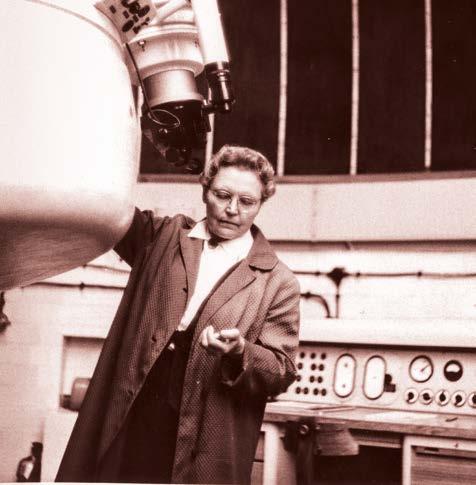

In the summer of 1945, a repatriation train arrived in Poland carrying former employees of Stefan Batory University (SBU) in Vilnius. Among them were members of the Astronomical Observatory staff: Professor Władysław Dziewulski, Associate Professor Wilhelmina Iwanowska, Dr Stanisław Szeligowski, and the gardener Hipolit Górski. At the astronomers’ suggestion, the final stop of their wartime journey became Toruń, the birthplace of Nicolaus Copernicus. There, under Dziewulski’s leadership, they began building an entirely new university: Nicolaus Copernicus University. By the following autumn, Iwanowska had obtained a professorship, and Dziewulski delivered the inaugural lecture in astronomy.
Wilhelmina Iwanowska had studied mathematics in her native Vilnius, intending to become a teacher, and in 1929, she earned her master’s degree. Up until the third year, the curricula for all programmes in the Faculty of Mathematics and Natural Sciences were identical, so she also took astronomy classes. In her third year, Professor Dziewulski offered her a position as a one-third-time assistant deputy at the SBU Astronomical Observatory. This decision would shape the course of her entire future.
Within the research conducted in Vilnius under Dziewulski’s guidance, in addition to classical celestial mechanics and orbit determination in a gravitational field, the foundations of astrophysics were also laid, that is, the determination of stars’ physical parameters (temperature, size, chemical composition, etc.), using photometric and spectroscopic methods. Understanding the structure of the Milky Way and the Universe through the astrophysical analysis of various groups of stars became Iwanowska’s scientific idée fixe. A modest beginning of this research was her 1933 doctoral dissertation on the photometric observations of a Cepheid –a star belonging to the group of so-called “standard candles,” which allow astronomers to determine distances to nearby galaxies. Almost her entire research career was devoted to the search for other groups of stars that could serve as distance markers in the Universe. At the time, this was a complete mystery. Today, it remains one of the most important problems in astronomy.
She completed her post-doctoral fellowship in Sweden under the supervision of Professor Bertil Lindblad. There, she became acquainted with stellar spectroscopy techniques, and upon her return, based on spectra obtained at the Stockholm Observatory, she earned her habilitation in 1937. Her fascination with the possibilities offered by spectroscopic research led, just before the war, to the acquisition for Vilnius of a large telescope – nearly half a metre – and Poland’s first stellar spectrograph. The war brutally interrupted all research. Many of her colleagues from SBU were killed. Iwanowska, together with her mother, supported herself through sewing. The new geopolitical situation forced her to leave the city forever. After the war, she would see her beloved Vilnius only from the windows of an aeroplane – an experience she described with tears in her eyes in her personal “observatory diary.”
A new observatory!
The Observatory of Nicolaus Copernicus University (the Institute of Astronomy) in Piwnice became Professor Iwanowska’s life’s work and a lasting testament to her contribution to Polish science – a facility constructed in the middle of an open field. Thanks to her, new buildings and telescopes continued to appear, and she, together with Mr Hipolit, planted numerous trees, shrubs, and flowers. A completely new element also appeared in the landscape – radio telescopes. Most importantly, the area became filled with people: successive generations of her Toruń students. It was for their sake that she chose to remain behind the Iron Curtain, never taking the opportunity to leave. She would return to her students, even though, as a single woman, she believed that science and the stars were more important than starting a family.
The life and work of Wilhelmina Iwanowska stand as a living testimony to history. Her life is inextricably intertwined with the revival of Polish astronomy after both World Wars. It also reflects the challenging path towards the independence of science during that time. With passion, she devoted part of her career to Copernicus, promoting his vision of the Great Universe. As a diligent witness to the greatest discoveries of the 20th century, she shared them through numerous lectures, interviews, and dozens of popular science articles in Urania and Postępy Astronomii. Today, she serves as an inspiration for many artistic, literary, theatrical, musical, and cinematic endeavours – and for this comic book.

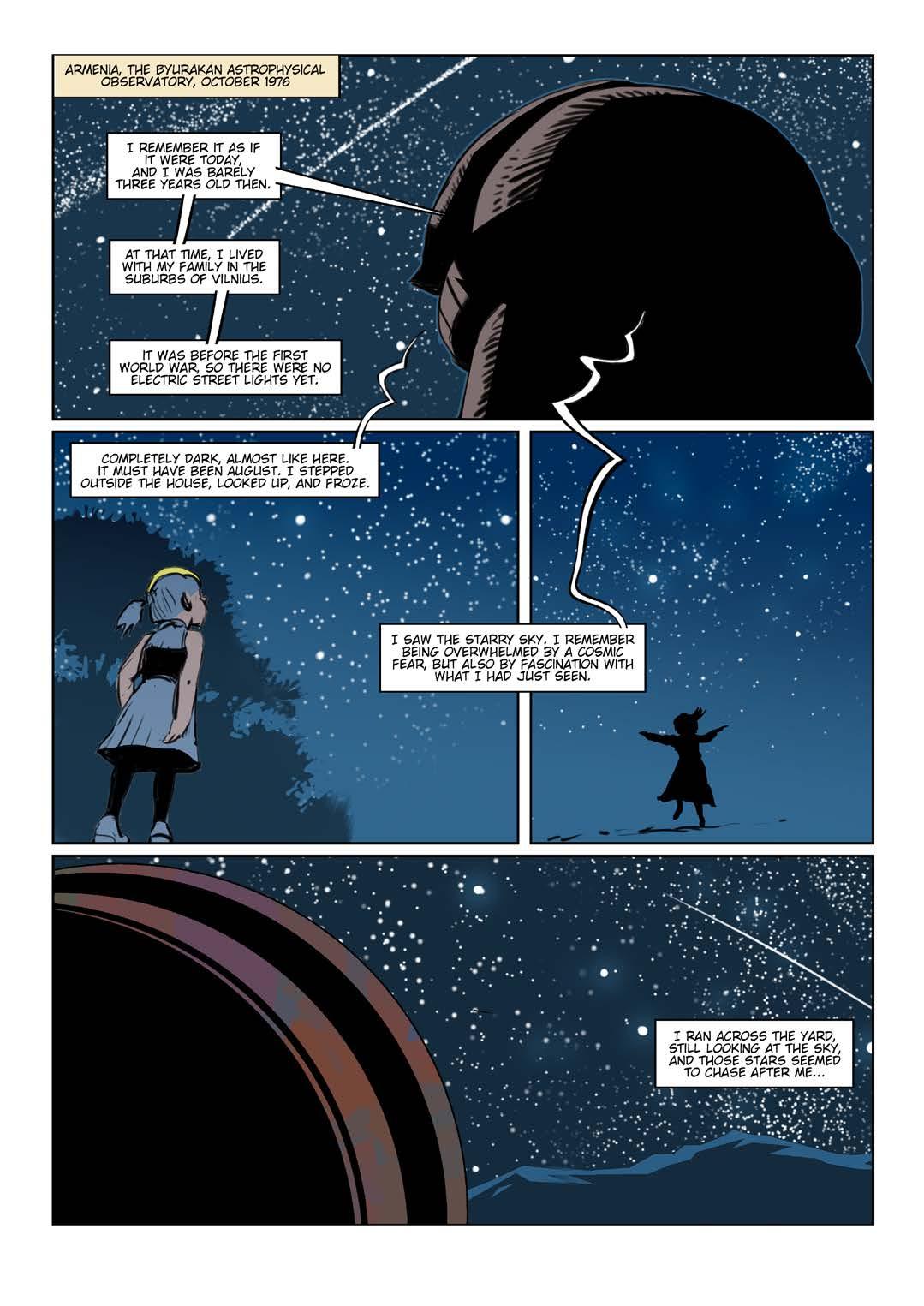

* Witold Łukaszewicz (1911–1975) – Polish historian and political activist, and Rector of Nicolaus Copernicus University in Toruń in 1965–1975

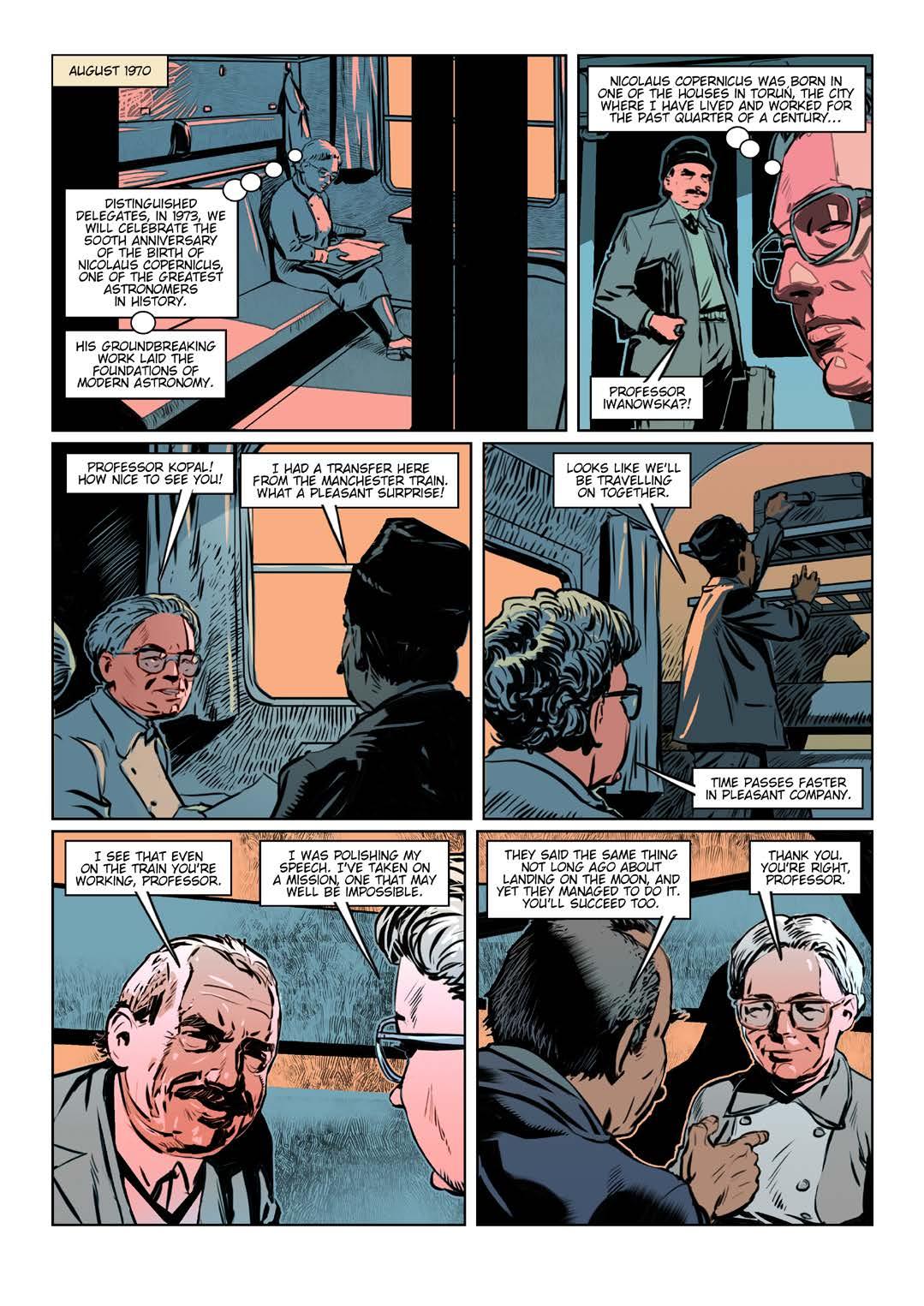
* Zdeněk Kopal (1914–1993) – Czech astronomer and astrophysicist working in Manchester, recognized after the Apollo mission as one of the 100 people who made the greatest contributions to preparing the Moon landing

* Professor Władysław Dziewulski (1878–1962) – Rector of Stefan Batory University in Vilnius, Vice-Rector of Nicolaus Copernicus University from 1945 to 1947, and one
construction
Astronomical Observatory in Piwnice

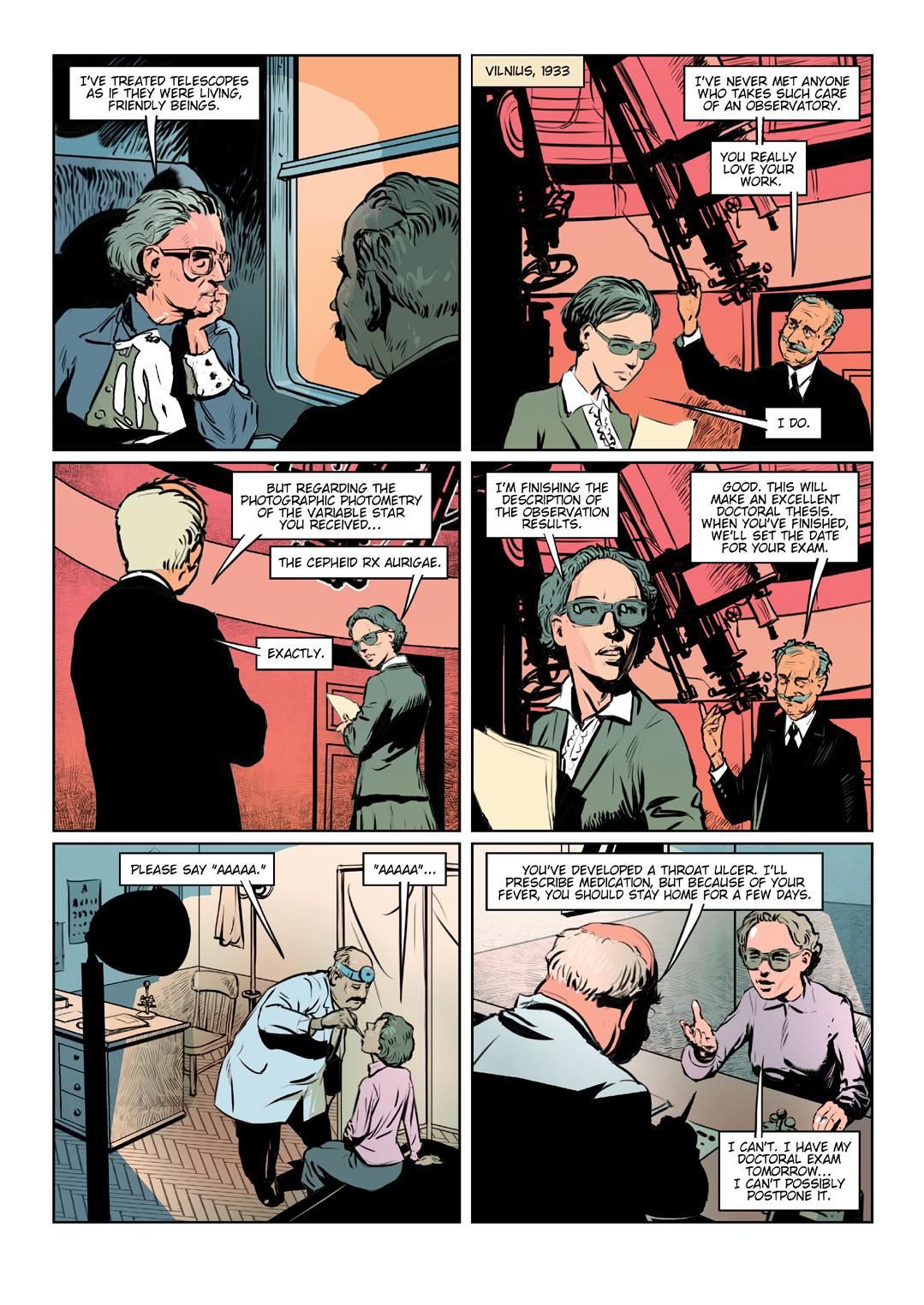

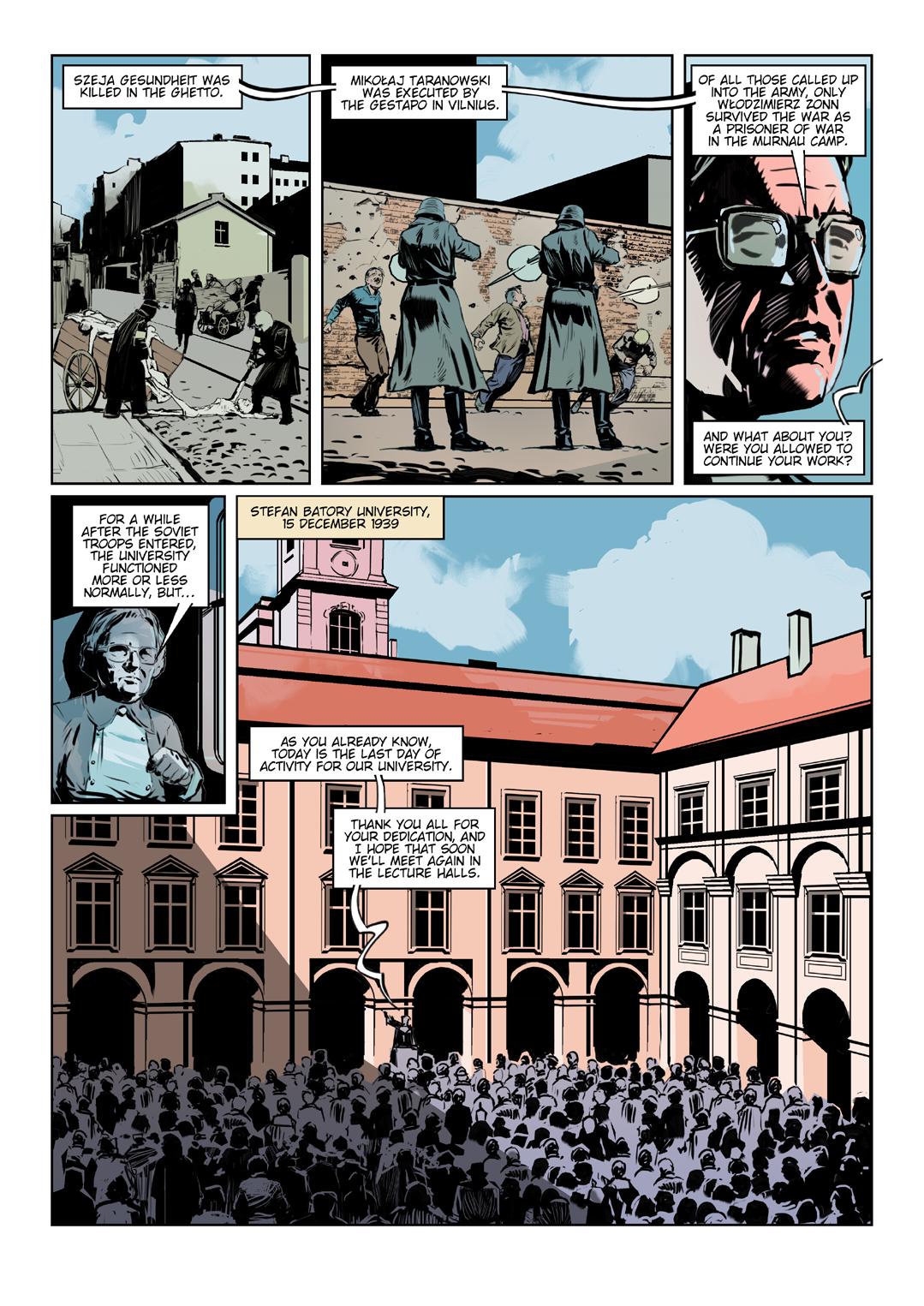
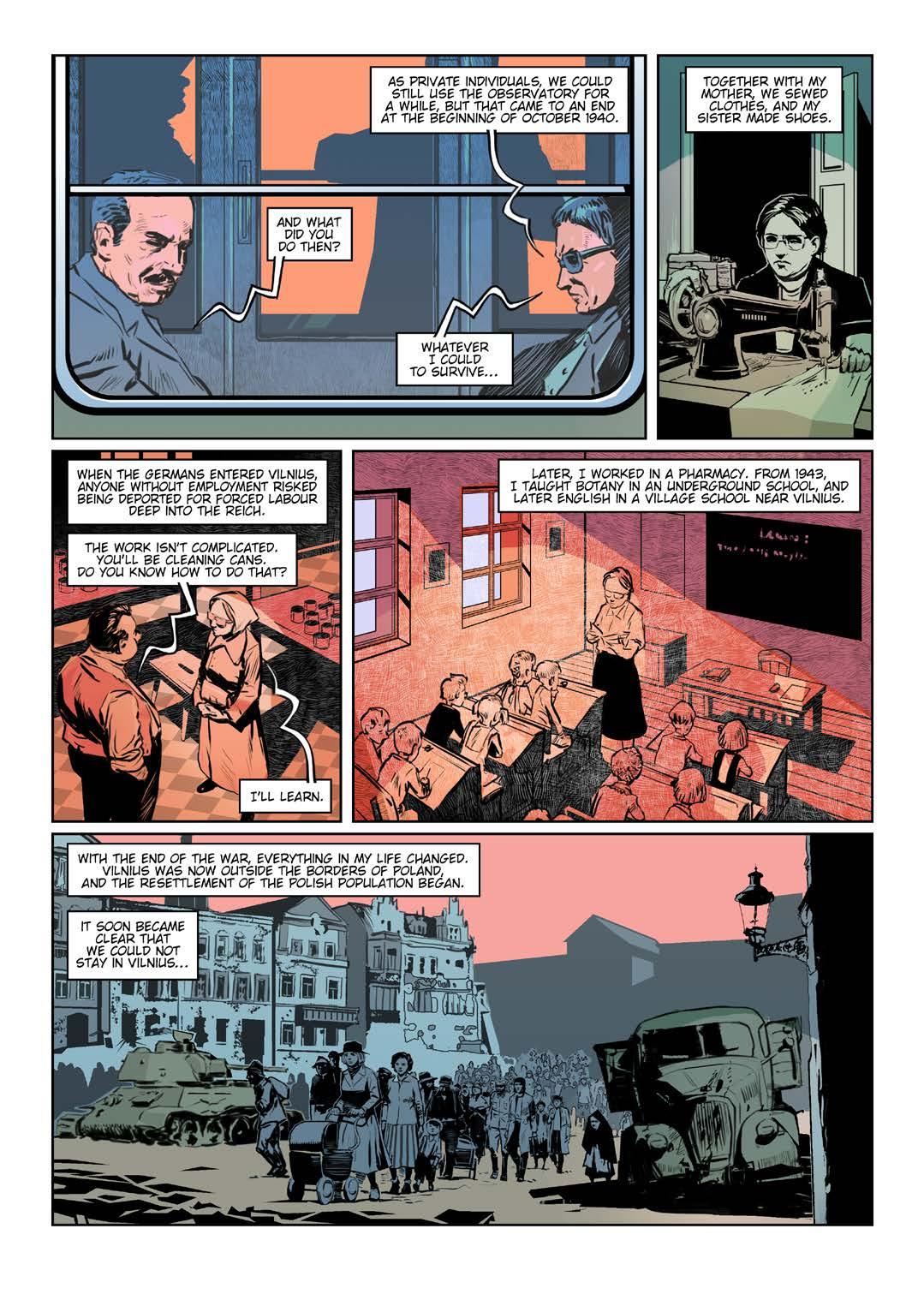

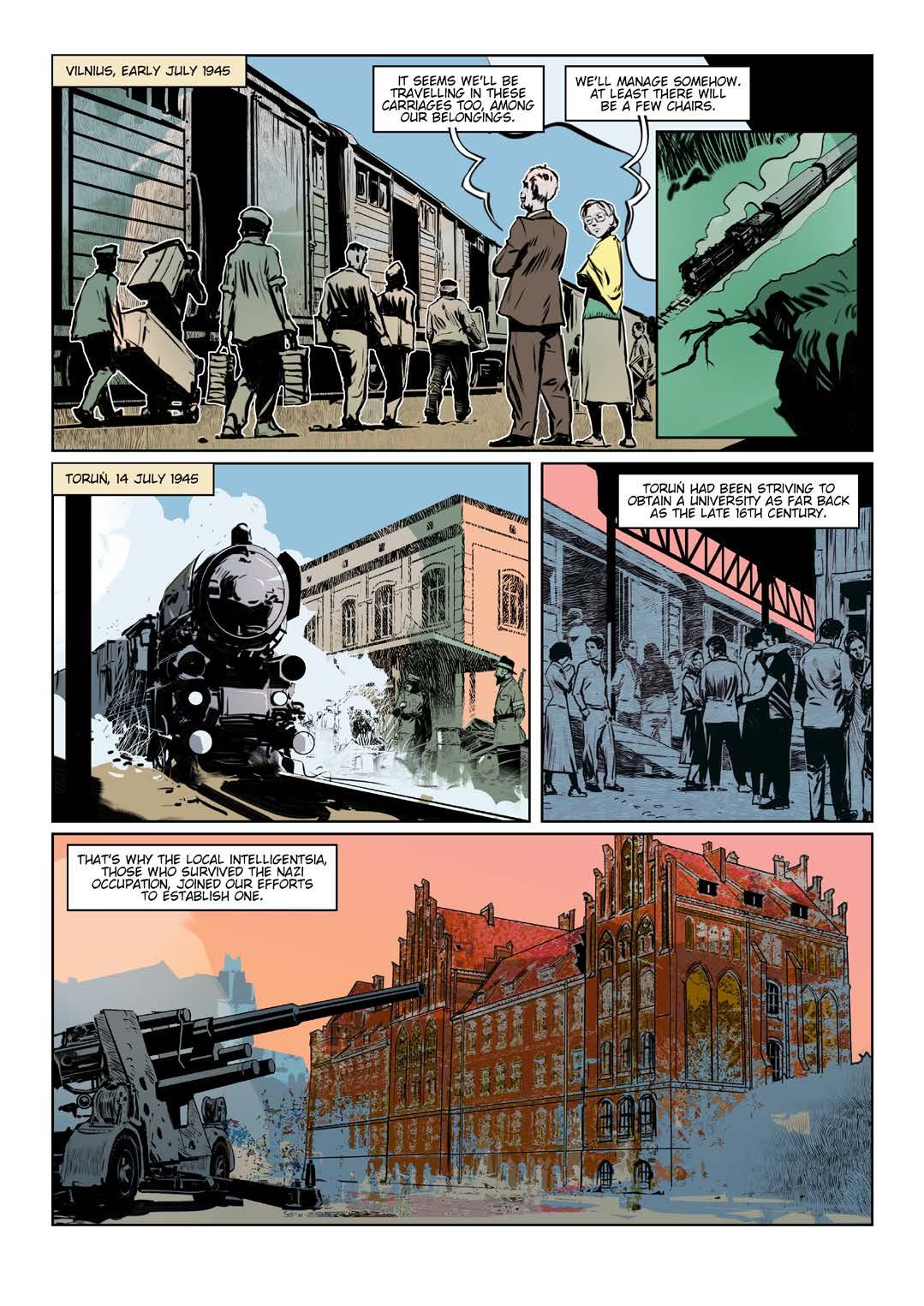
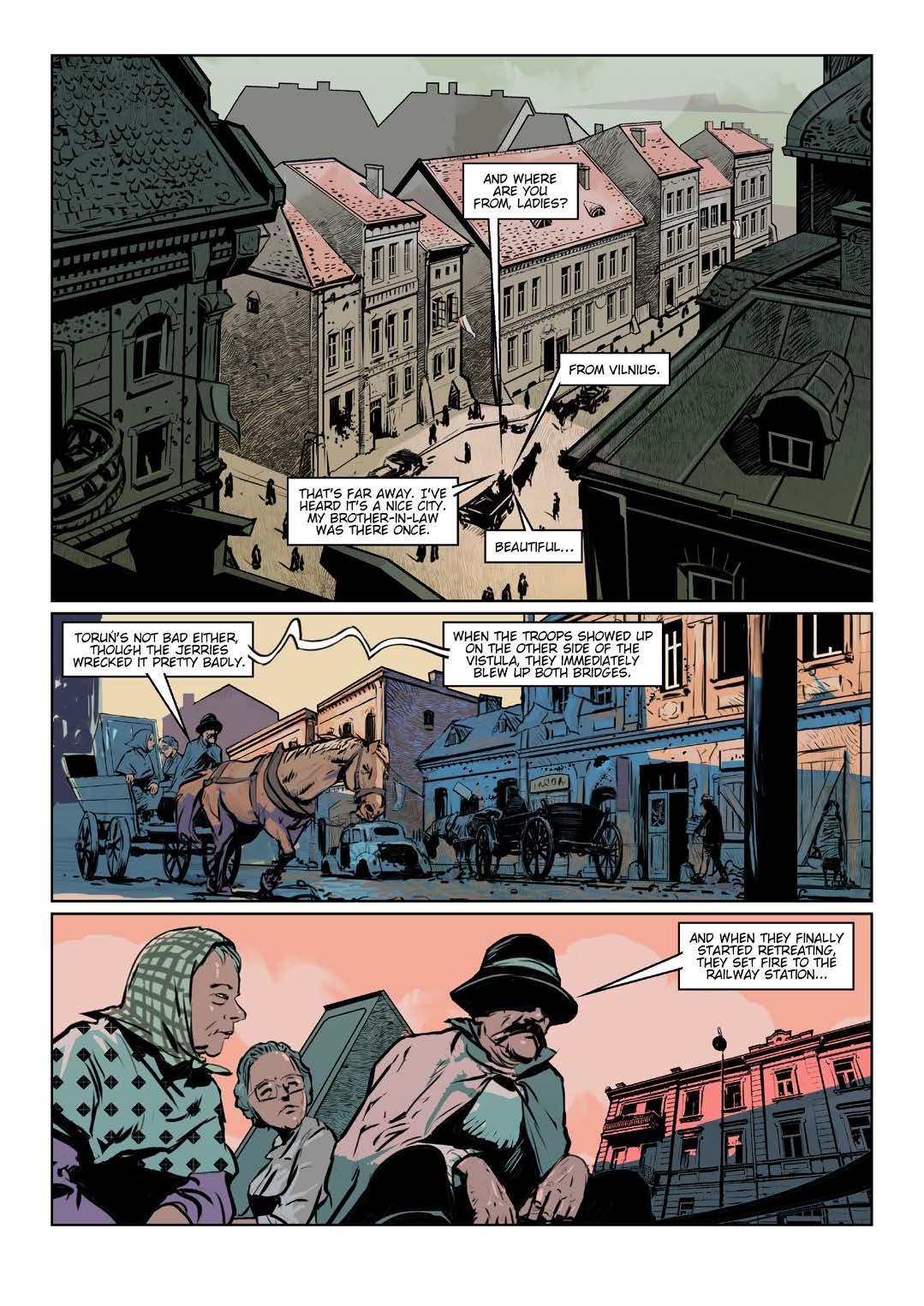

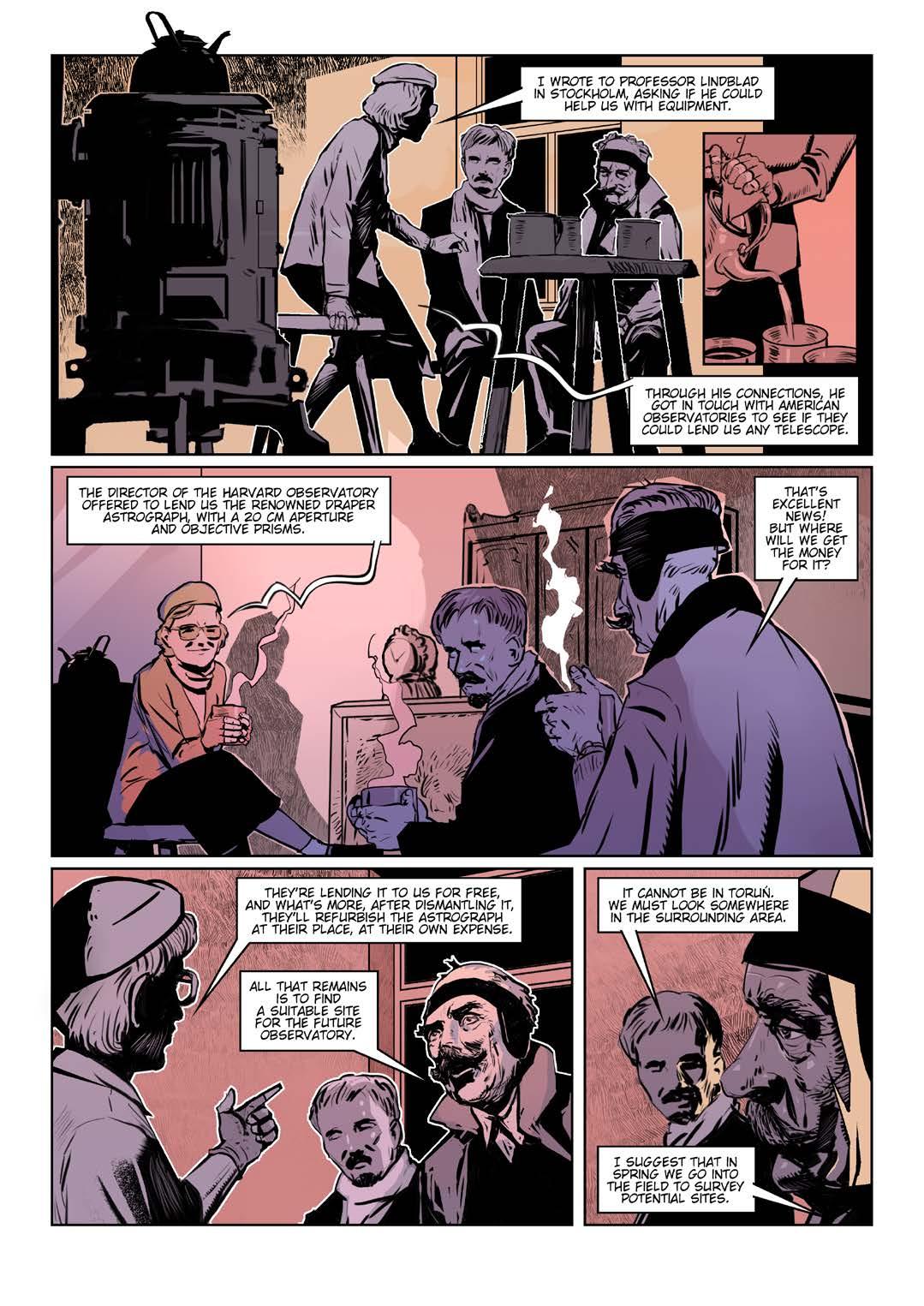
* Bertil Lindblad (1895–1965) – Professor at the Royal Swedish Academy of Sciences, Director of the Astronomical Observatory in Stockholm, and the first recipient of an honorary doctorate from Nicolaus Copernicus University (1959)



* Wiktor Abarcumian (1908–1996) – President of the Academy of Sciences of the Armenian SSR and of the International Astronomical Union, founder and Director of the Byurakan Astrophysical Observatory, and recipient of an honorary doctorate from Nicolaus Copernicus University (1973)








* Professor Ryszard Bauer (1928–1997) – Deputy Director (1973–1981) and later Director of the Institute of Physics at Nicolaus Copernicus University
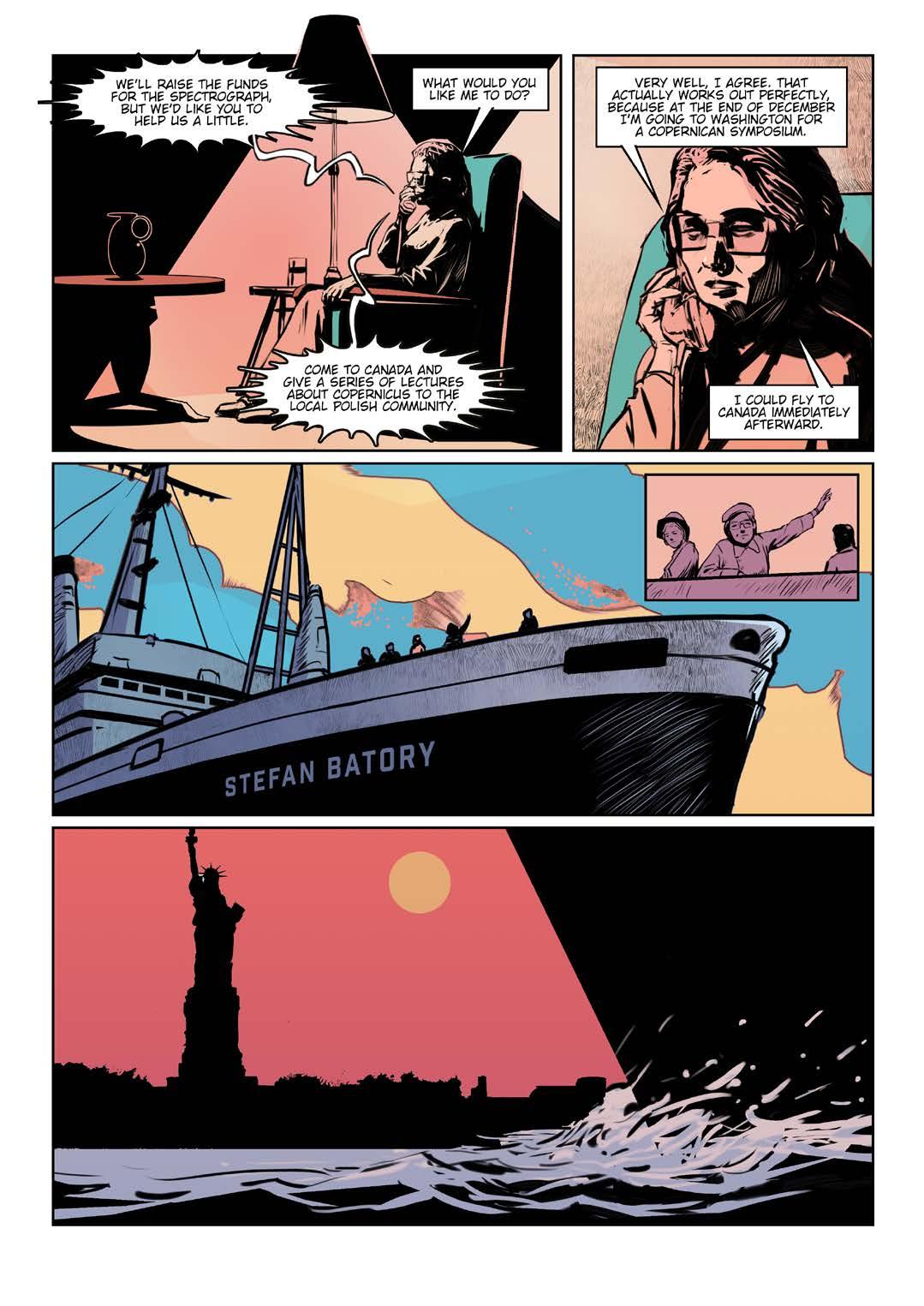


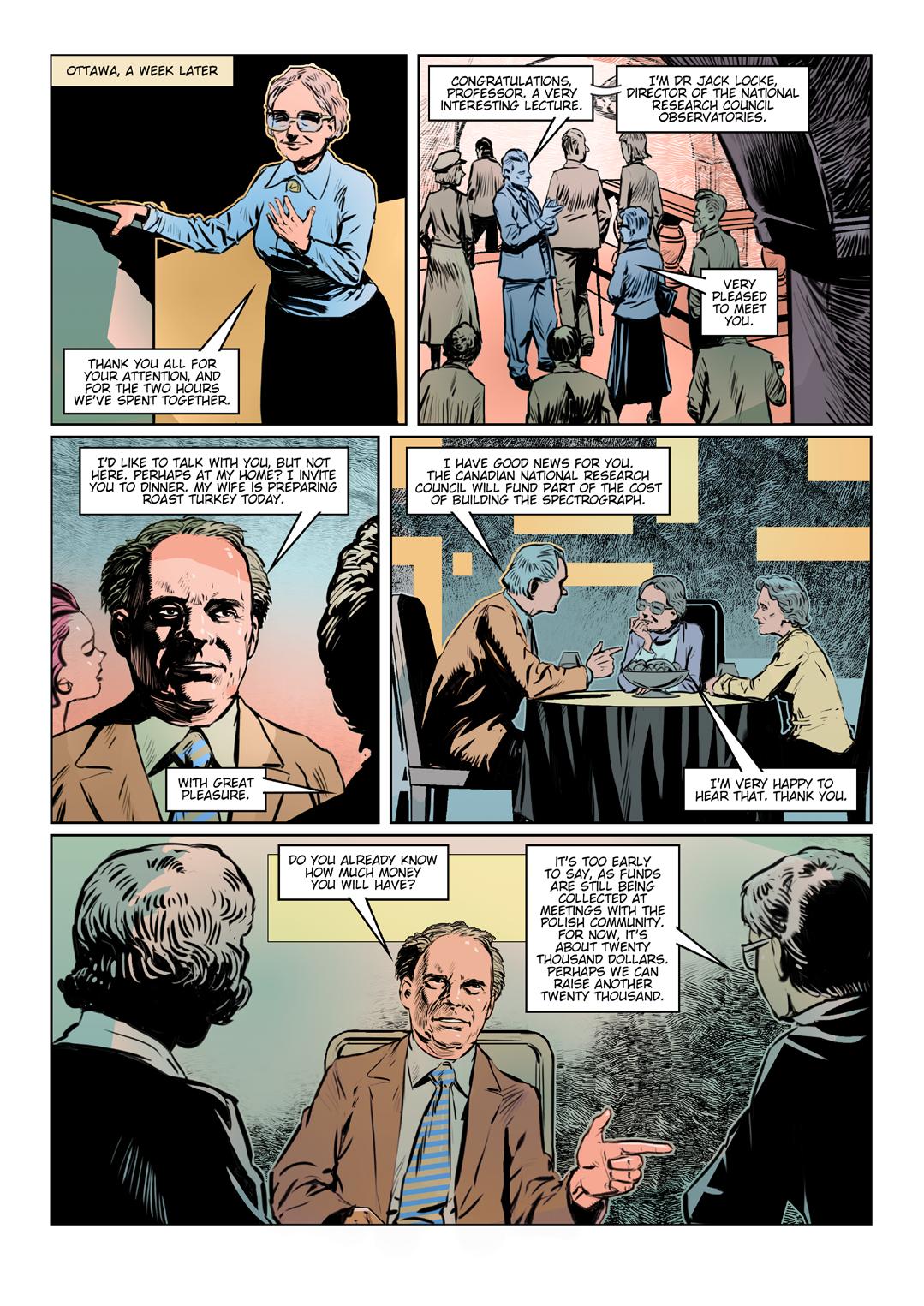




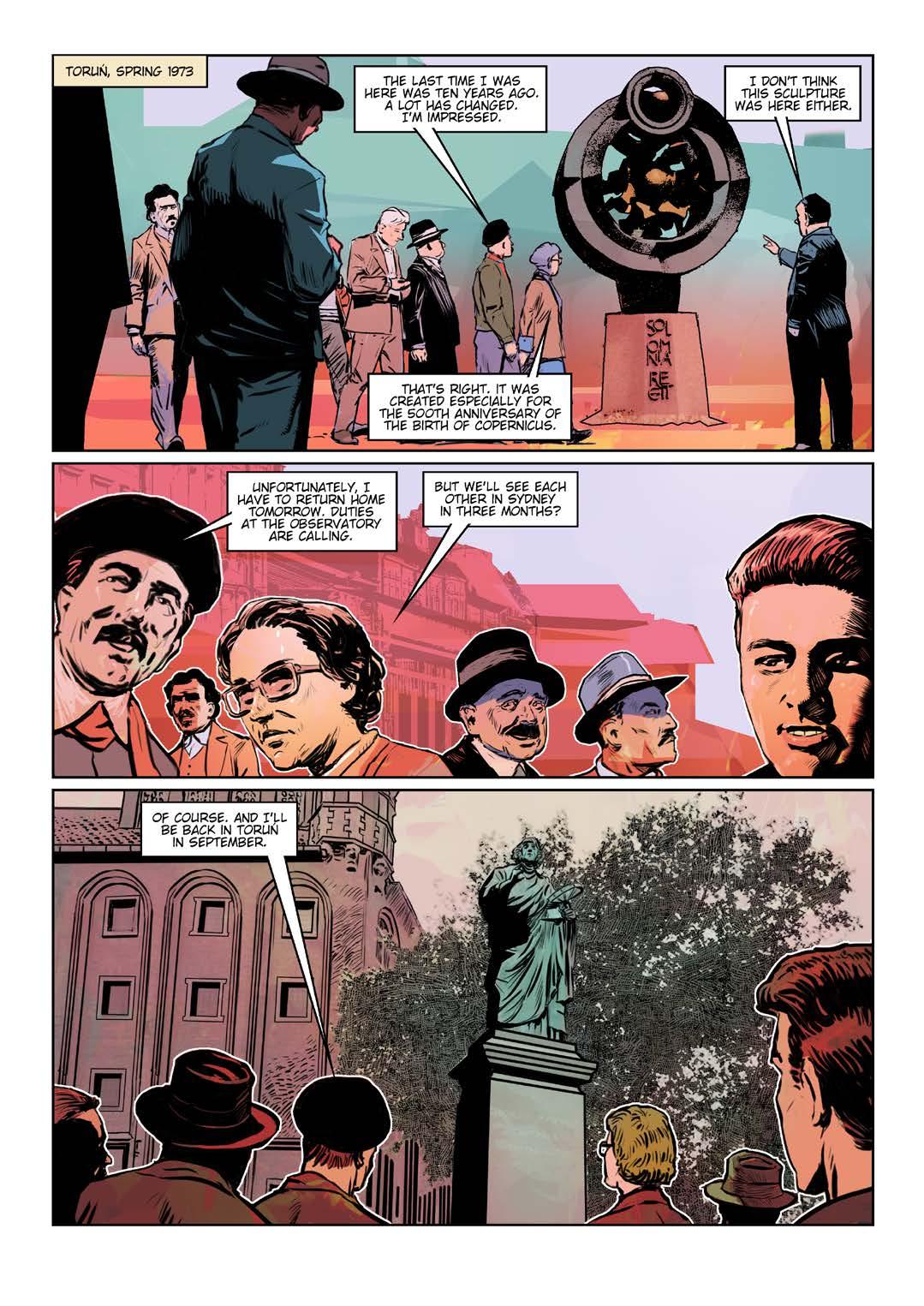
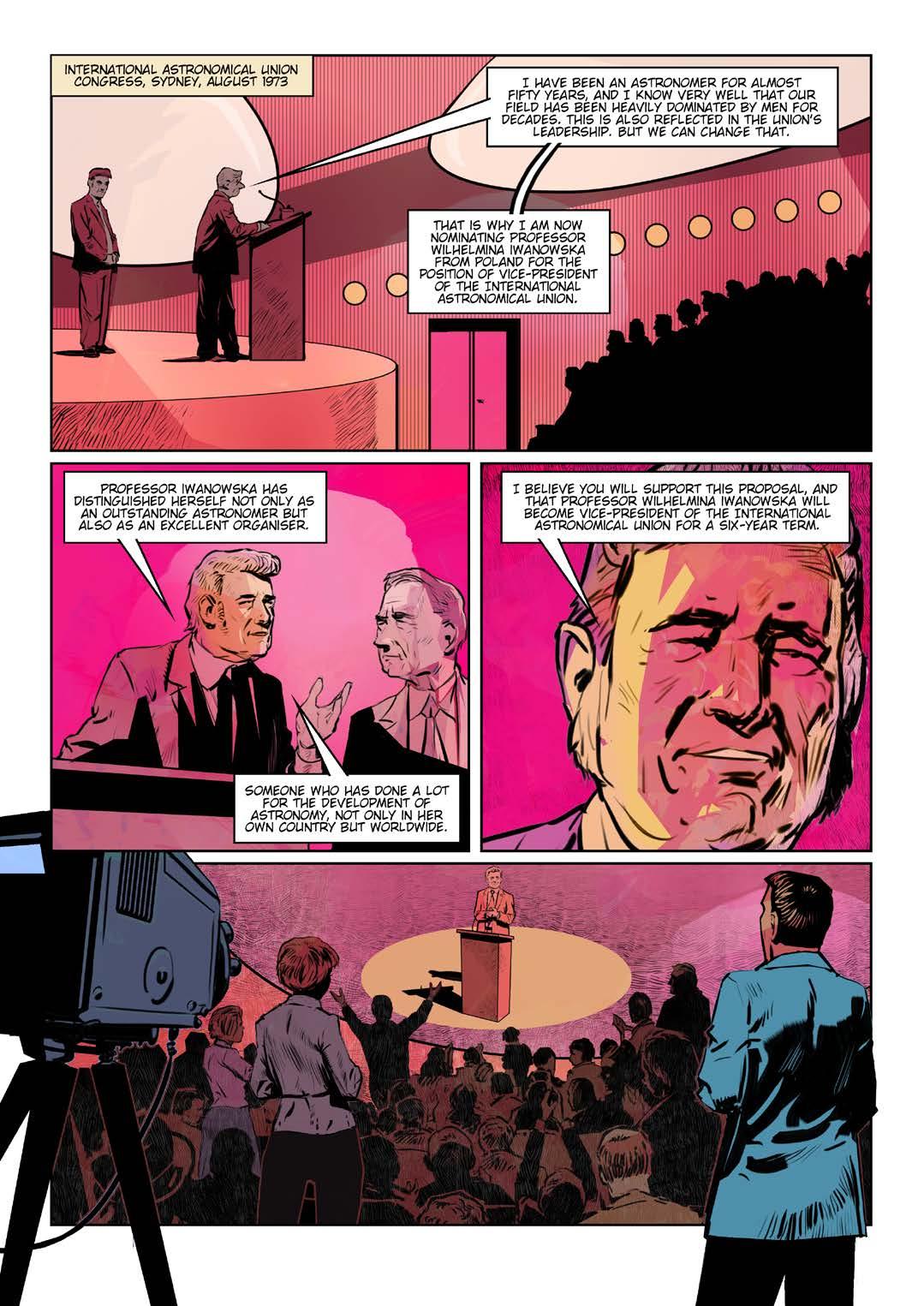
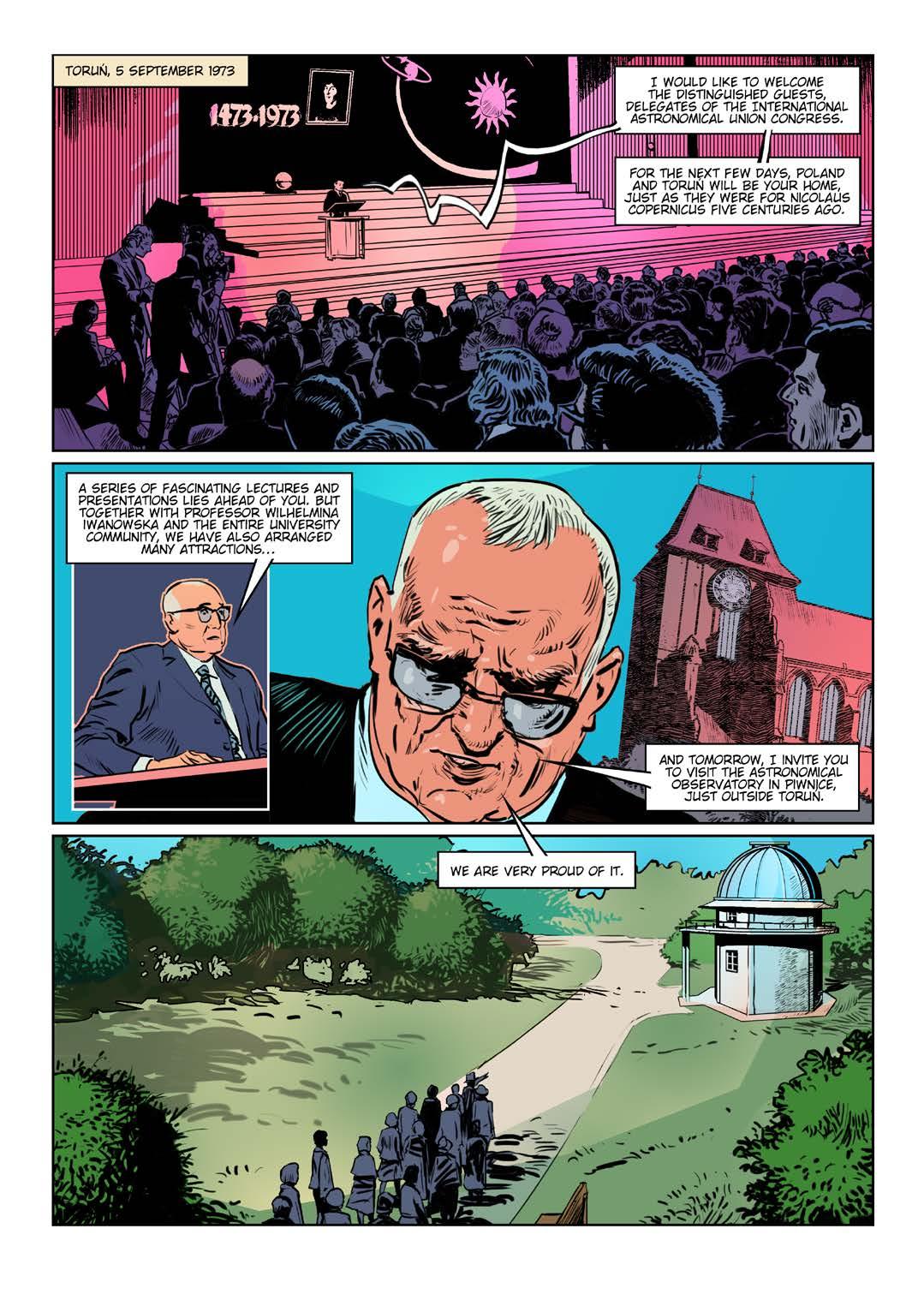
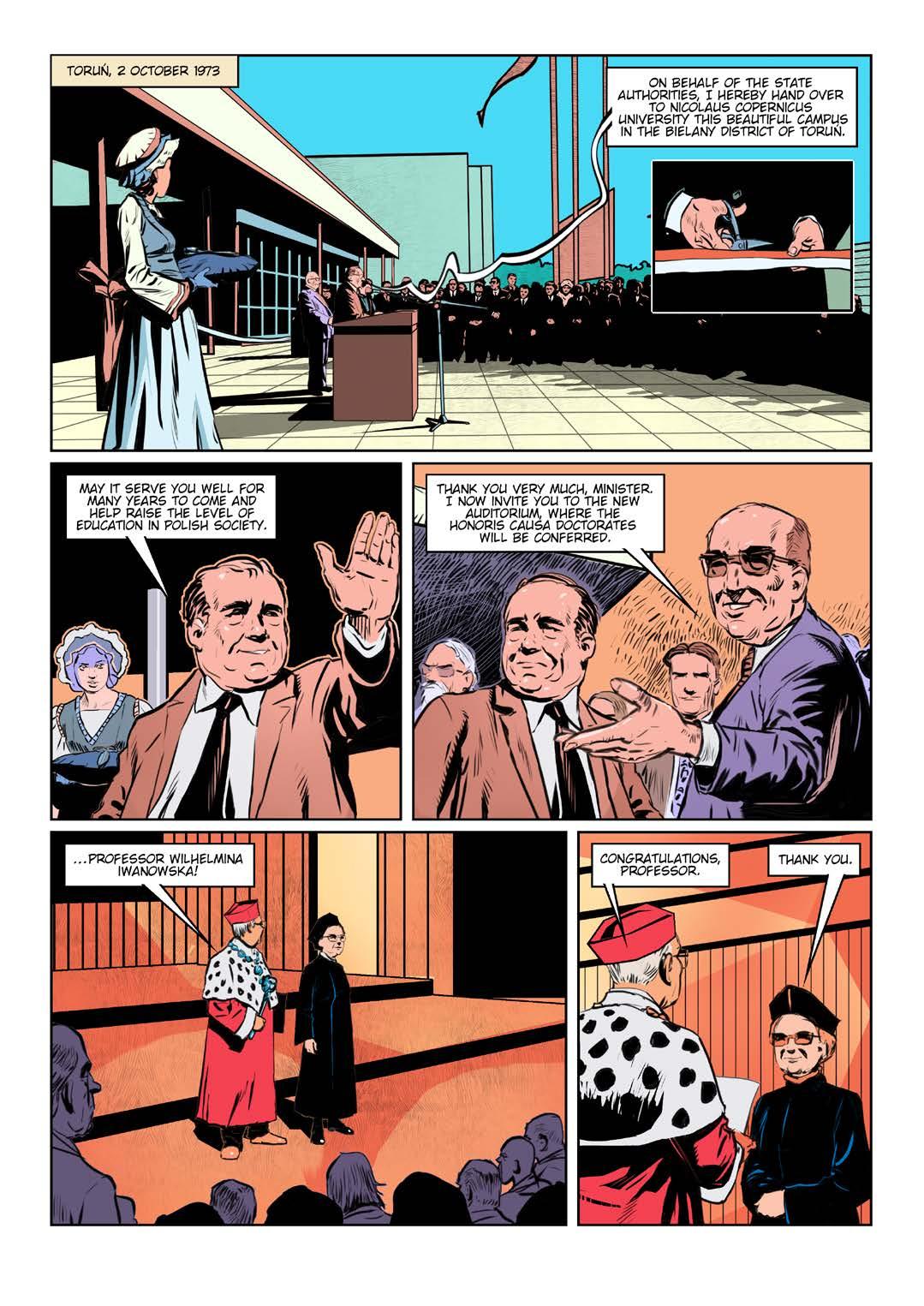

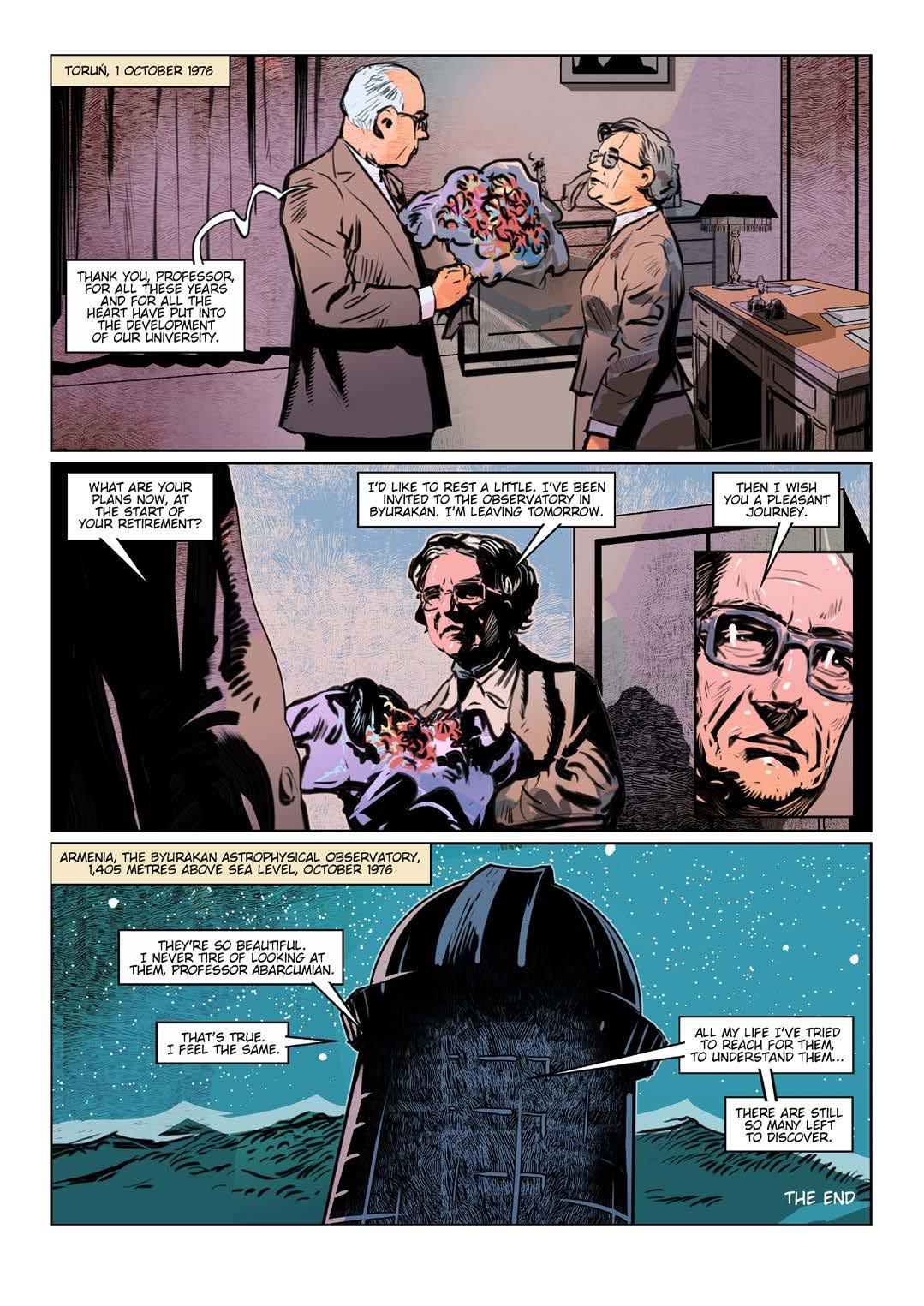
WRITER
Maciej Jasiński
ARTIST
Jacek Michalski
COVER ARTIST
Arkadiusz Klimek
CONSULTATION
dr hab. Maciej Mikołajewski, prof. UMK
TRANSLATION
Agnieszka Szewczuk
ISBN 978-83-970379-9-1
YEAR OF PUBLICATION 2025
PATRONAGE
PUBLISHED BY
Agencja Reklamowa GALL sc ul. Dworcowa 7/203, 87-100 Toruń gall@gall.torun.pl
COMMISSIONED BY The Kujawsko-Pomorskie Region

CONTACT:
Kontakt:

Office of the Marshal of the Kujawsko-Pomorskie Region in Toruń Address: Plac Teatralny 2, 87-100 Toruń, Poland tel. +48 56: 6218600, 6218610 e-mail: punkt.informacyjny@kujawsko-pomorskie.pl www.kujawsko-pomorskie.pl
Urząd Marszałkowski Województwa Kujawsko-Pomorskiego w Toruniu Plac Teatralny 2, 87-100 Toruń, tel. 56 62-18-600, 56 62-18-610 e-mail: punkt.informacyjny@kujawsko-pomorskie.pl www.kujawsko-pomorskie.pl facebook.com/WojewodztwoKujawskoPomorskie facebook.com/FilmoweKujawyIPomorze x.com/lubietubyc instagram.com/kujawskopomorskie youtube.com/user/umwkp issuu.com/kujawsko-pomorskie flickr.com/photos/kujawskopomorskie
Scan the QR code to check out other comic book stories about great figures of Kuyavia and Pomerania


Somewhere far away in the Solar System, the asteroid 198820 Iwanowska orbits through space. Could the young heroine of our comic book, gazing at the sky above Vilnius with both fear and awe, have imagined that she would one day become one of Poland’s most distinguished women astronomers and that a celestial body would bear her name? Certainly not. Yet it was then that she developed a desire to explore the mysteries of the Universe – frightening on the one hand, but fascinating and alluring on the other.
Before little Wilhelmina became a distinguished university professor, she had to overcome many obstacles, as the path to groundbreaking discoveries proved long and winding. In Vilnius, she witnessed firsthand the fall of Tsarist Russia, the emergence of a free Poland, the Second World War, and two occupations – Soviet and German. At Stefan Batory University in Vilnius, she was building her academic career when the war interrupted her dreams... A pivotal moment in her life came in 1945, when she was forced to relocate to Poland along with other scholars from Vilnius. She was among those who helped to establish Nicolaus Copernicus University (NCU) in Toruń and facilitated the transfer of part of the Vilnius academic community there.
The University of Toruń owes a great deal to Wilhelmina Iwanowska. From the ground up, she built the NCU Astronomical Observatory in Piwnice, which still houses Poland’s largest optical telescope. Her colleagues and students recall her as a person of refined manners, demanding and meticulous, with a strong sense of duty and discipline, and deeply committed to everything she undertook. Wilhelmina Iwanowska’s work in stellar astronomy earned her international recognition.
Professor Iwanowska devoted herself entirely to science, but not without deep reflection. “Apart from science, which meant so much to me, I lived by faith. […] The source and motivation of my faith was, on the one hand, Nature – the Universe – so fascinating to explore, yet still incomprehensible; and on the other hand, the ethical ideal contained in the Gospel; in short, what Kant expressed in the words: ‘the starry heavens above me and the moral law within me.’ These two values – science and ethics – mutually support each other,” she wrote about herself in 1981 in the article My Scientific Biography
Professor Wilhelmina Iwanowska is an extraordinary figure, well worth knowing and remembering – and thanks to the comic book in your hands, her story now comes alive for you.
Piotr Całbecki Marshal of the Kujawsko-Pomorskie Region
